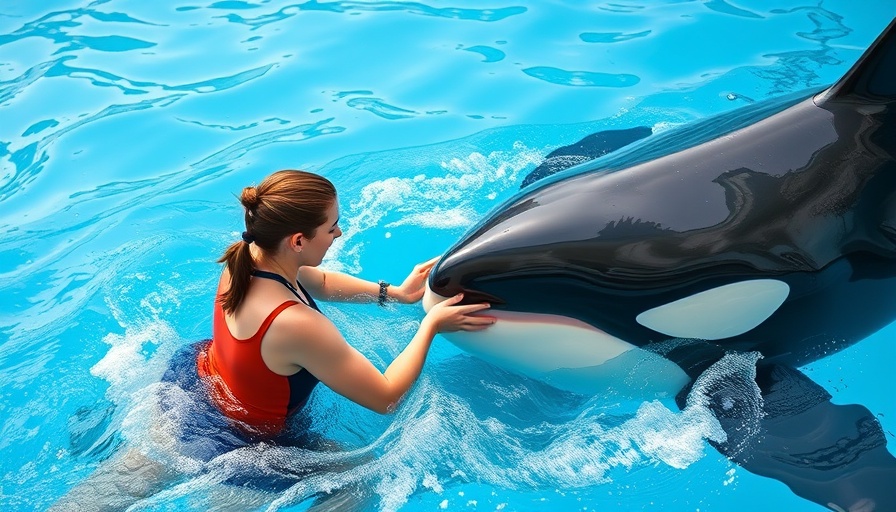
SeaWorld's Safety Protocols Under Fire After Trainer Injury
In a startling incident that highlights ongoing safety concerns at marine parks, SeaWorld Orlando is facing a fine from the Occupational Safety and Health Administration (OSHA) after a female trainer was injured by a killer whale during a training exercise in September 2024. This incident raises crucial questions about animal training practices and employee safety in environments where wild animals are kept in captivity.
Under the Microscope: What Went Wrong?
According to the U.S. Department of Labor, the trainer was "not properly protected from hazards" during the exercise with the orca. OSHA’s investigation revealed serious lapses, including exposure to potential dangers such as bites and drowning, noting that trainers should not be in close contact with these powerful creatures without adequate safety measures in place.
The proposed fine of $16,550 is set against a backdrop of ongoing scrutiny of SeaWorld's practices. OSHA issued a general duty clause serious citation, indicating that the park's safety protocols were insufficient to protect trainer employees in potentially hazardous interactions with the animals.
The Bigger Picture: Historical Context of Safety Issues
SeaWorld has faced intense criticism over the years for its treatment of marine animals and the safety of its trainers. The deaths of several trainers in the past—including high-profile incidents involving orcas—have prompted recommendations by OSHA to reduce direct physical interactions between trainers and orcas during performances. These recommendations arise from tragic events that have highlighted the risks associated with training these massive animals whose instincts can be unpredictable.
Public Perception: Cruelty vs. Conservation
The ongoing debate about the ethical treatment of animals in captivity has intensified due to incidents like these. Critics argue that marine parks like SeaWorld prioritize entertainment over animal welfare, illustrating this with the dangerous conditions under which trainers often work. Supporters claim that such facilities contribute to conservation and education. This moment presents an opportunity for re-evaluation of how SeaWorld balances these competing priorities.
Future Implications: What Comes Next?
With SeaWorld having 15 business days to respond to the OSHA findings, the course of action it takes may set precedents for operational protocols across marine entertainment venues. The outcome could either impose stricter regulations regarding trainer safety or reinforce the status quo, depending on how SeaWorld chooses to comply with safety mandates.
Protecting Employees: Steps Forward for SeaWorld
The incident serves as a call to action for SeaWorld and similar organizations to revisit their safety protocols. Implementing more robust training, ensuring better protective measures, and possibly restructuring interactions between trainers and animals can drastically reduce accident risk. Learning from past mistakes is critical for cultivating a safer environment for both employees and animals.
Conclusion: Ensuring Safety in Animal Training
This incident at SeaWorld speaks volumes about the larger issue of safety in animal training within the entertainment industry. As marine facilities are challenged to provide both education and entertainment while protecting their employees, a reevaluation of existing safety measures seems imperative. In light of this, it is essential for stakeholders to engage in an active dialogue about the future of marine wildlife tourism and how to prioritize the welfare of both trainers and animals involved.
For those concerned about animal welfare and safety in zoos and marine parks, staying informed and advocating for stricter safety protocols can make a difference. Your voice can contribute significantly to positive changes within this industry.
 Add Row
Add Row  Add
Add 




Write A Comment